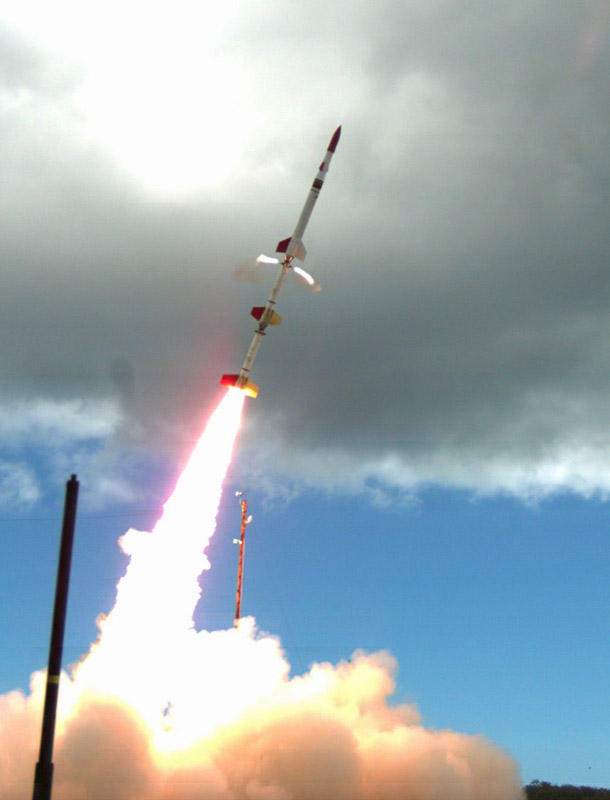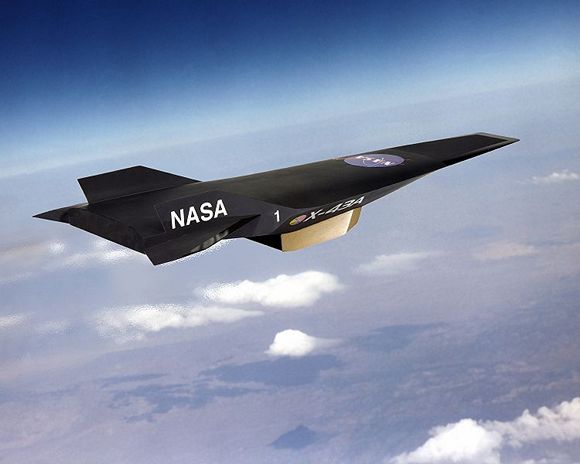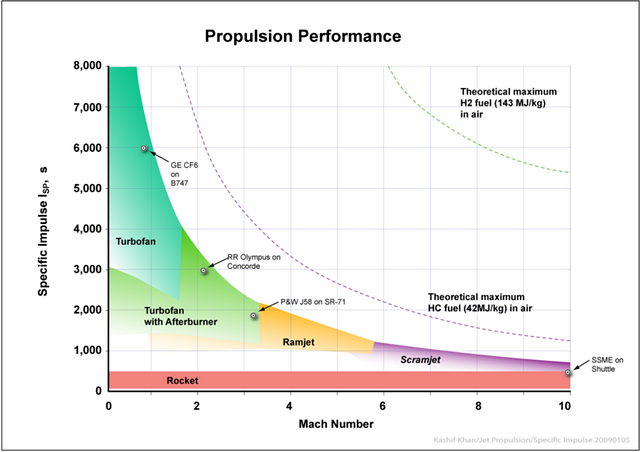It looks like you're using an Ad Blocker.
Please white-list or disable AboveTopSecret.com in your ad-blocking tool.
Thank you.
Some features of ATS will be disabled while you continue to use an ad-blocker.
2
share:
A team that includes NASA and the U.S. Air Force Research Laboratory (AFRL) is celebrating the successful launch of an experimental hypersonic scramjet research flight from the Pacific Missile Range Facility on the island of Kauai, Hawaii.
NASA, AFRL and Australia's Defence Science and Technology Organisation (DSTO) are working with a number of partners on the HIFiRE (Hypersonic International Flight Research Experimentation Program) program to advance hypersonic flight -- normally defined as beginning at Mach 5 -- five times the speed of sound. The research program is aimed at exploring the fundamental technologies needed to achieve practical hypersonic flight. Being able to fly at hypersonic speeds could revolutionize high speed, long distance flight and provide more cost-effective access to space.
Source
(Click link for entire article)
I admit,I do not follow air craft technology as closely as I probably should,none the less,I figured there are those on here who do follow the latest updates/advancements in Aeronautics that would be interested in this article.
It is amazing how far we have come in only the last 50 years,not to mention overall since the wright brothers first flew.
The conspiracy theorist in me says 'if this is what they are willing to show us,imagine what they have behind closed doors,away from the public and prying eyes'
In summary -
"This is the first time we have flight tested a hydrocarbon-fueled scramjet accelerating from Mach 6 to Mach 8," said NASA Hypersonics Project Scientist Ken Rock, based at NASA'S Langley Research Center in Hampton, Va. "At Mach 6 the inlet compression and combustion process was designed to reduce the flow to below Mach 1 -- subsonic combustion. But at Mach 8 flight the flow remained greater than Mach 1 or supersonic throughout the engine. So this test will give us unique scientific data about scramjets transitioning from subsonic to supersonic combustion -- something we can't simulate in wind tunnels."

The Hypersonic International Flight Research Experimentation Program (HIFiRE) launches an experimental hypersonic scramjet vehicle from the Pacific Missile Range Facility in Hawaii during a recent research flight. (Credit: AFRL)
'The HIFiRE team has already achieved demonstrating supersonic combustion in flight with a hydrocarbon fueled scramjet, in comparison to a hydrogen-fueled scramjet. While hydrogen fuel is more reactive, hydrocarbon fuel offers many benefits, including operational simplicity and higher fuel density so a hypersonic vehicle can carry more fuel.'
I leave it to the experts and enthusiasts,Enjoy!
Here is a shameless bump in case those who may of been interested and/or curious get the chance to check out the OP,along with some additional info.
and photos for anyone that may not be aware of what a scramjet is exactly and how it operates
Scramjet:
Scramjet Source

An artist's conception of the X-43A Hypersonic Experimental Vehicle, or "Hyper-X" in flight. The X-43A was developed to flight test a dual-mode ramjet/scramjet propulsion system at speeds from Mach 7 up to Mach 10 (7 to 10 times the speed of sound, which varies with temperature and altitude).

Scramjet engine explained.

The specific impulse of various engines/propulsion performance.
Overcoming the limitations & perfecting Hypersonic flight holds great implications and unparalleled possibility for our futures Commercial & military flight capabilities,with the potential of cost-effective access to space -
As stated here in the article:
I Look forward to your replies and I hope to learn some things along the way.
ETA:
***Disclaimer*** - Lest I come off as being ignorant or misleading, I would like to make it known that Scramjet engines/tech. are not a brand new breakthrough by any means.although it has only been quite recent that we have been able to successfully achieve powered flight.
Scramjet Source
Australia, USA Collaborating on Hypersonic Research
Scramjet:
A scramjet (supersonic combustion ramjet) is a variant of a ramjet airbreathing jet engine in which combustion takes place in supersonic airflow. As in ramjets, a scramjet relies on high vehicle speed to forcefully compress and decelerate the incoming air before combustion (hence ramjet), but whereas a ramjet decelerates the air to subsonic velocities before combustion, airflow in a scramjet is supersonic throughout the entire engine.
This allows the scramjet to efficiently operate at extremely high speeds: theoretical projections place the top speed of a scramjet between Mach 12 (9,100 mph; 15,000 km/h)and Mach 24 (18,000 mph; 29,000 km/h).[not verified in body] The fastest air-breathing aircraft is a SCRAM jet design, the NASA X-43A which reached Mach 9.8. For comparison, the second fastest[1] air-breathing aircraft, the manned SR-71 Blackbird, has a cruising speed of Mach 3.2 (2,100 mph).[2]
Scramjet Source

An artist's conception of the X-43A Hypersonic Experimental Vehicle, or "Hyper-X" in flight. The X-43A was developed to flight test a dual-mode ramjet/scramjet propulsion system at speeds from Mach 7 up to Mach 10 (7 to 10 times the speed of sound, which varies with temperature and altitude).

Scramjet engine explained.

The specific impulse of various engines/propulsion performance.
Overcoming the limitations & perfecting Hypersonic flight holds great implications and unparalleled possibility for our futures Commercial & military flight capabilities,with the potential of cost-effective access to space -
As stated here in the article:
The research program is aimed at exploring the fundamental technologies needed to achieve practical hypersonic flight. Being able to fly at hypersonic speeds could revolutionize high speed, long distance flight and provide more cost-effective access to space.
I Look forward to your replies and I hope to learn some things along the way.
ETA:
***Disclaimer*** - Lest I come off as being ignorant or misleading, I would like to make it known that Scramjet engines/tech. are not a brand new breakthrough by any means.although it has only been quite recent that we have been able to successfully achieve powered flight.
While scramjets are conceptually simple, actual implementation is limited by extreme technical challenges. Hypersonic flight within the atmosphere generates immense drag, and temperatures found on the aircraft and within the engine can be much greater than that of the surrounding air. Maintaining combustion in the supersonic flow presents additional challenges, as the fuel must be injected, mixed, ignited, and burned within milliseconds. While scramjet technology has been under development since the 1950s, only very recently have scramjets successfully achieved powered flight.
Scramjet Source
Australia, USA Collaborating on Hypersonic Research
edit on 13-5-2012 by PerfectPerception because: (no reason given)
Originally posted by PerfectPerceptionThe conspiracy theorist in me says 'if this is what they are willing to show us,imagine what they have behind closed doors,away from the public and prying eyes'
Right on the money with that statement. that jet seems to be combating the mass/speed equation. The pro tech the navy has avoids the mass drag of space. behind closed doors is the Anti-gravity, faster than light technology.
reply to post by Mandrakerealmz
There definitely exists the possibility of 'black budget' projects covertly creating aircraft beyond what the public believes is even theoretically plausible.They very well could be experimenting with exotic advanced technologies like something right out of a sci fi novel or movie.Depending on what you are willing to believe of course.
Admittedly I do not have any proof to back up my beliefs.My intuition and knowledge of governments lying tells me there is most likely a ton of stuff we do not know anything about that is being kept hidden from us,for various reasons.
Typical reasons being military secrecy/competition/strategy...Other reasons/excuses just as apparent although effect us directly are - GREED,POWER & CONTROL.
I do not know what all truly exists in secret but I have to say a part of me wishes that their are really 'anti-gravity' spacecraft,FTL or close to FTL ships.Hell,give me a space ship that can warp the fabric of time/create worm holes alas a time travel machine and I would be happier than a pig in s* I would be like a little boy in a toy store, X a trillion haha
One can hope and dream.
There definitely exists the possibility of 'black budget' projects covertly creating aircraft beyond what the public believes is even theoretically plausible.They very well could be experimenting with exotic advanced technologies like something right out of a sci fi novel or movie.Depending on what you are willing to believe of course.
Admittedly I do not have any proof to back up my beliefs.My intuition and knowledge of governments lying tells me there is most likely a ton of stuff we do not know anything about that is being kept hidden from us,for various reasons.
Typical reasons being military secrecy/competition/strategy...Other reasons/excuses just as apparent although effect us directly are - GREED,POWER & CONTROL.
I do not know what all truly exists in secret but I have to say a part of me wishes that their are really 'anti-gravity' spacecraft,FTL or close to FTL ships.Hell,give me a space ship that can warp the fabric of time/create worm holes alas a time travel machine and I would be happier than a pig in s* I would be like a little boy in a toy store, X a trillion haha
One can hope and dream.
edit on 13-5-2012 by PerfectPerception because: (no reason given)
new topics
-
World's Best Christmas Lights!
General Chit Chat: 7 hours ago -
Drone Shooting Arrest - Walmart Involved
Mainstream News: 7 hours ago -
Can someone 'splain me like I'm 5. Blockchain?
Science & Technology: 8 hours ago -
Squirrels becoming predators
Fragile Earth: 8 hours ago -
Labour's Anti-Corruption Minister Named in Bangladesh Corruption Court Papers
Regional Politics: 9 hours ago -
Have you noticed?? Post Election news coverage...
World War Three: 9 hours ago
top topics
-
Georgia appeals court disqualifies DA Fani Willis from Trump election interference case
US Political Madness: 12 hours ago, 25 flags -
Have you noticed?? Post Election news coverage...
World War Three: 9 hours ago, 12 flags -
Squirrels becoming predators
Fragile Earth: 8 hours ago, 9 flags -
Drone Shooting Arrest - Walmart Involved
Mainstream News: 7 hours ago, 8 flags -
Can someone 'splain me like I'm 5. Blockchain?
Science & Technology: 8 hours ago, 7 flags -
World's Best Christmas Lights!
General Chit Chat: 7 hours ago, 7 flags -
Labour's Anti-Corruption Minister Named in Bangladesh Corruption Court Papers
Regional Politics: 9 hours ago, 6 flags
2
